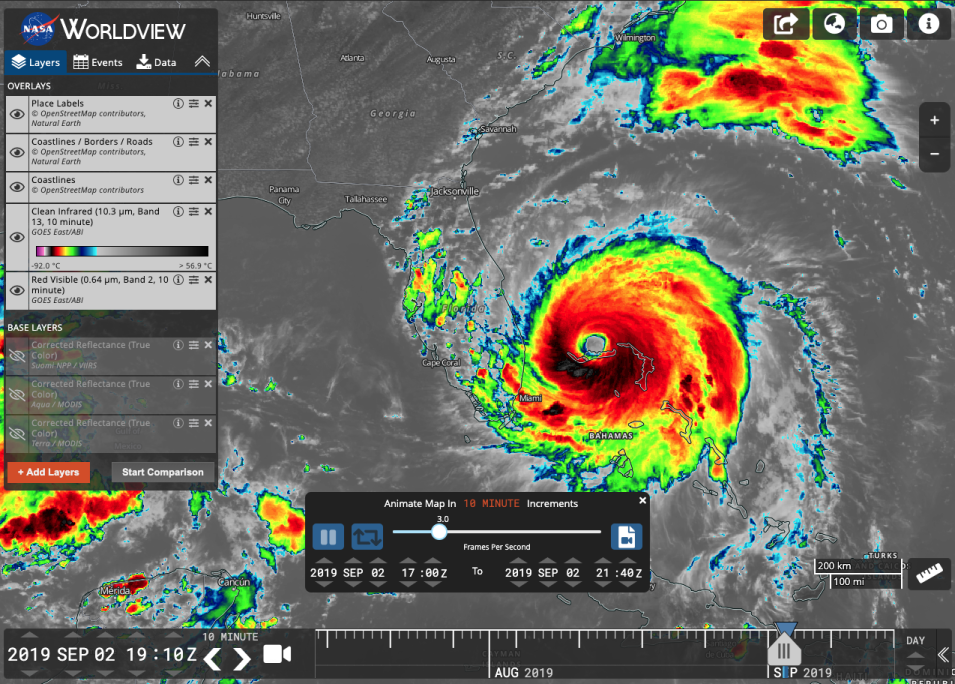We've been faithfully providing daily global imagery from MODIS, VIIRS, and other instruments for the last 7+ years and we're now entering new territory - we're going to provide a rolling month of geostationary imagery from GOES-East, GOES-West, and Himawari-8.
That's imagery available at 10 MINUTE increments for the last month!
Our current offerings will be Red Visible, Clean Infrared, and Air Mass. We may add more in the future, or provide higher resolution versions of this imagery - keep an eye on the blog for any updates! In particular, the Red Visible layer is currently being displayed at 1km spatial resolution but may be available at its native 500m in the future.






